
Design to enhance user trust and compliance in healthcare:
a case study on rehabilitation for chronic back pain in Sweden’s primary health system

Studies show an increase in the number of patients erroneously seeking care at emergency departments with average waiting times consequently rising.
This leads to dissatisfaction and mistrust in Sweden's primary health system.
The focus of this Bachelor's thesis project was on the patient’s direct contact with healthcare providers. Through creating a stable means of communication, the objective was to build trust and understanding, while on the other hand help medical professionals incentivise compliance for a more successful treatment and overall satisfaction on both sides.
Double diamond
The methodology follows four main phases: “discover”, “define”, “develop” and “deliver”, corresponding to research, analysis, decision, implementation.
It is an iterative process with two main widening and narrowing stages.
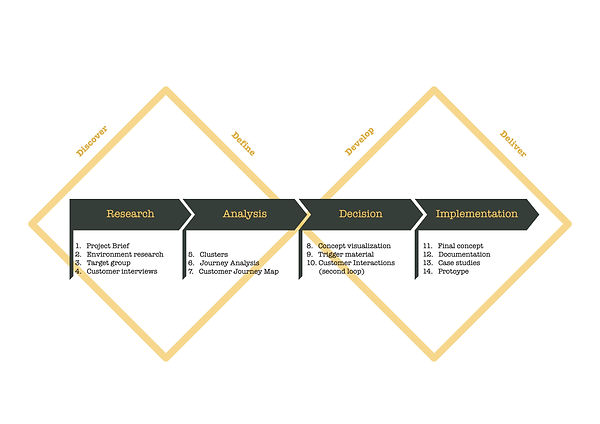jpeg.jpg)
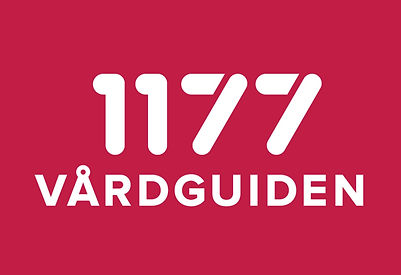
Problem setting
Sweden's Vårdcentralen has not built trust with patients.
Patients often are confused when approaching primary health care, causing backlogs and subsequent frustration on both sides.
Co-design
The project was very much an experience of "co-designing".
The initial phase identified an interesting and diverse user pool through user interviews.
These users helped develop questions and answers, effectively guiding the design process.
Target group
Back pain sufferers were identified as the target group of the project.
Back pain was one of the main reasons to seek help at Vårdcentralen, as well as affecting over half of Sweden's population (regardless of age, gender etc).
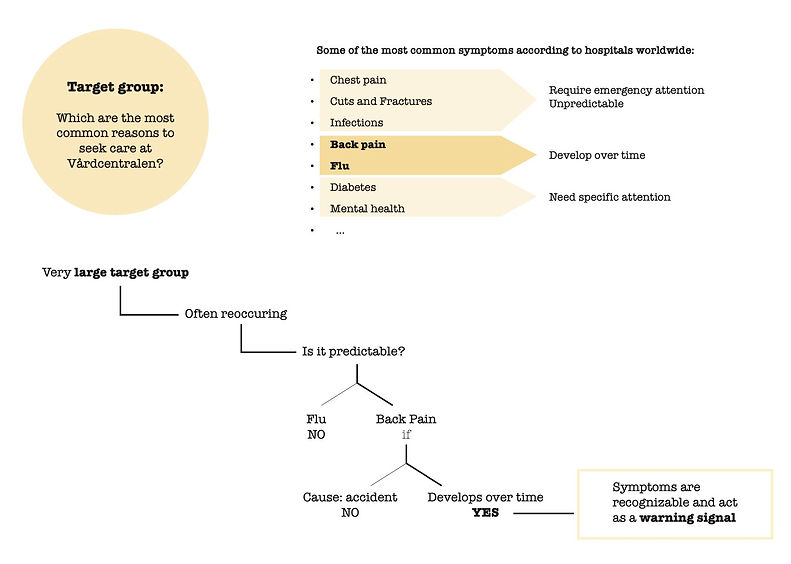
User interviews
Interviews were semi-structured.
It was important to keep the conversation natural and fluid, in order to gather honest, clear information.
A toolkit was followed:
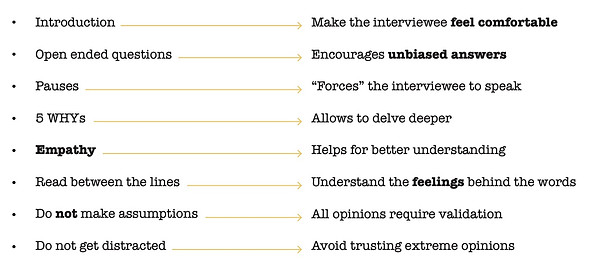
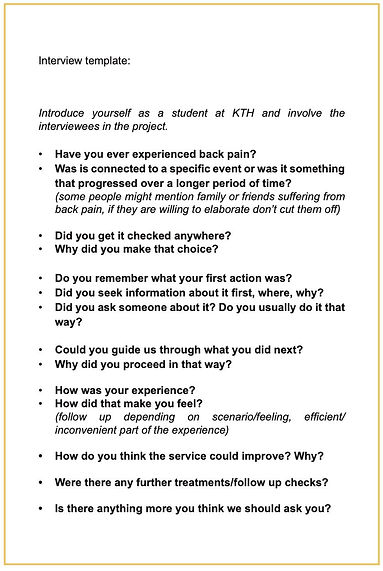

Affinity Mapping
The information from the interviews was gathered and organised through clustering.
Affinity maps were created to see recurring statements, and later organised in an Empathy Map.
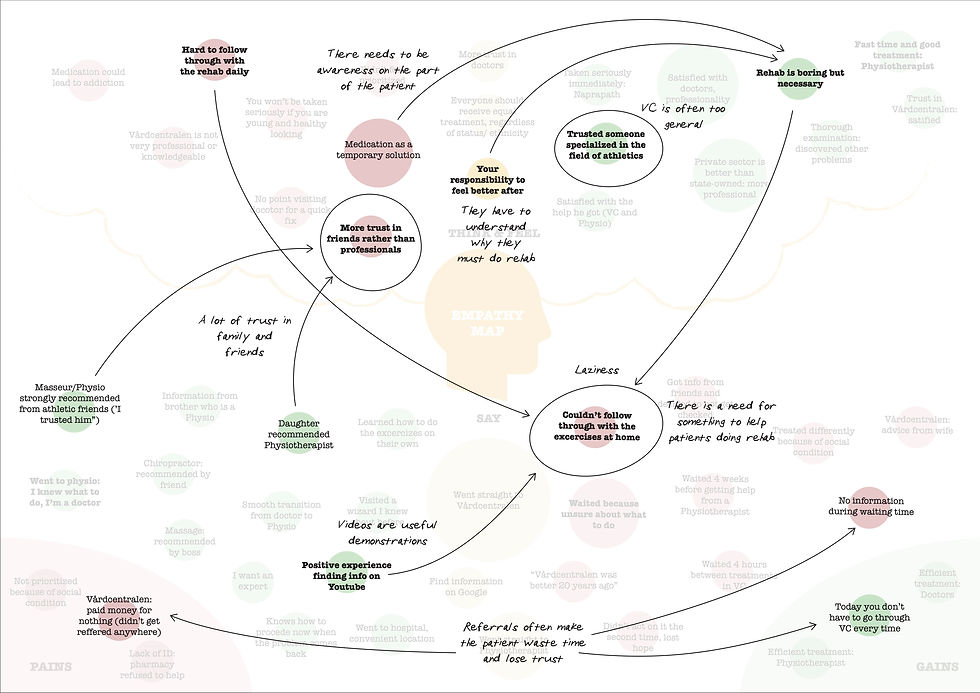
User journey
Different journeys that were extrapolated from the interviews were analysed and mapped out.
A simplified journey was analysed with an emotional curve (how the user felt throughout).
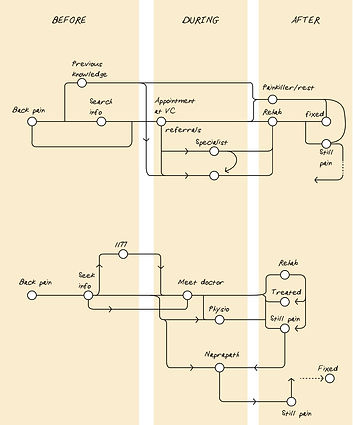
Concept development
The concept of a platform to increase mutual communication between (back pain rehabilitation) patients and physicians was developed.
Trigger material was tested in a second wave of user interviews to develop an effective service.
Finally, case study apps and web platforms (for exercise, physiotherapy, and rehabilitation) were analysed.

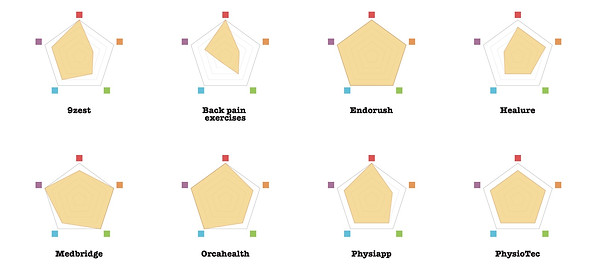
Prototype
A platform (App or Web) to be connected to
the 1177.se (primary health website), as an extension of the user’s personal profile.
The platform would be accessible to:
-
patient (to help with the rehab)
-
physician (to monitor the progress)
Five main sections:
-
Daily exercise (with video, text, printable material)
-
Progress mapping (as incentive or gamification)
-
Communication (with physio)
-
Information (about the prescribed treatment)
-
Optional notifications/reminders


Conceptualised in collaboration with
Daniel de Geer, Frida Rybo,
Linn Carlsson, Robin Lundqvist
at KTH Stockholm, 2018
Developed as my Bachelor's Thesis Project
Supervisors: Prof. Silvia Barbero
Prof. Amina Pereno
at Politecnico di Torino, 2019





